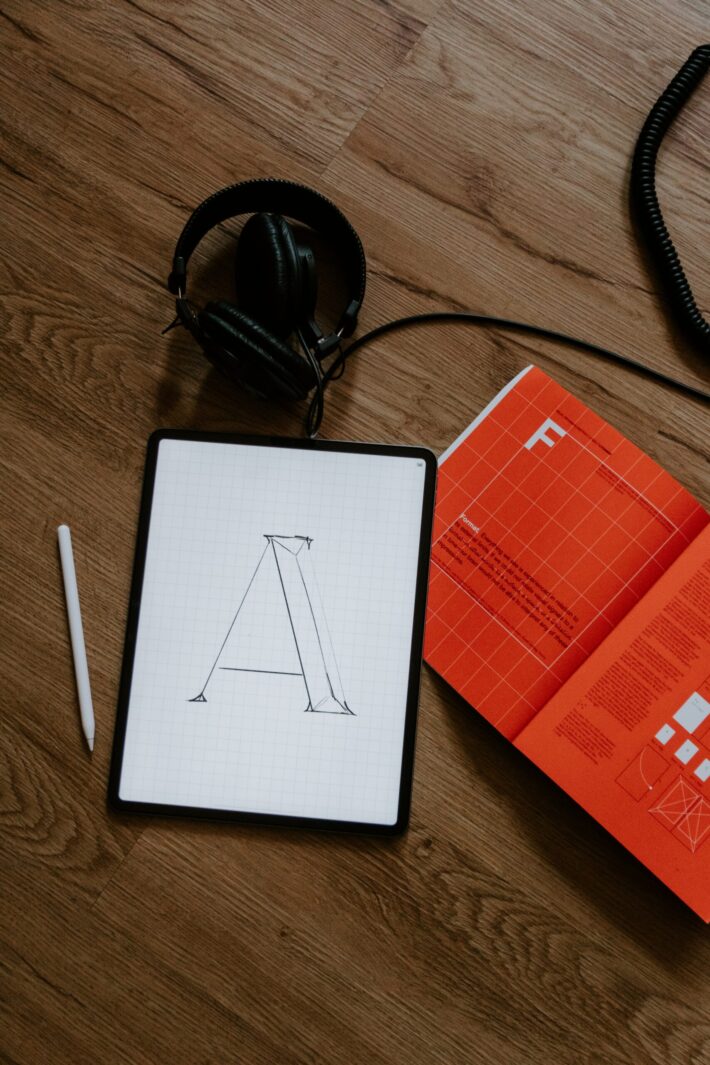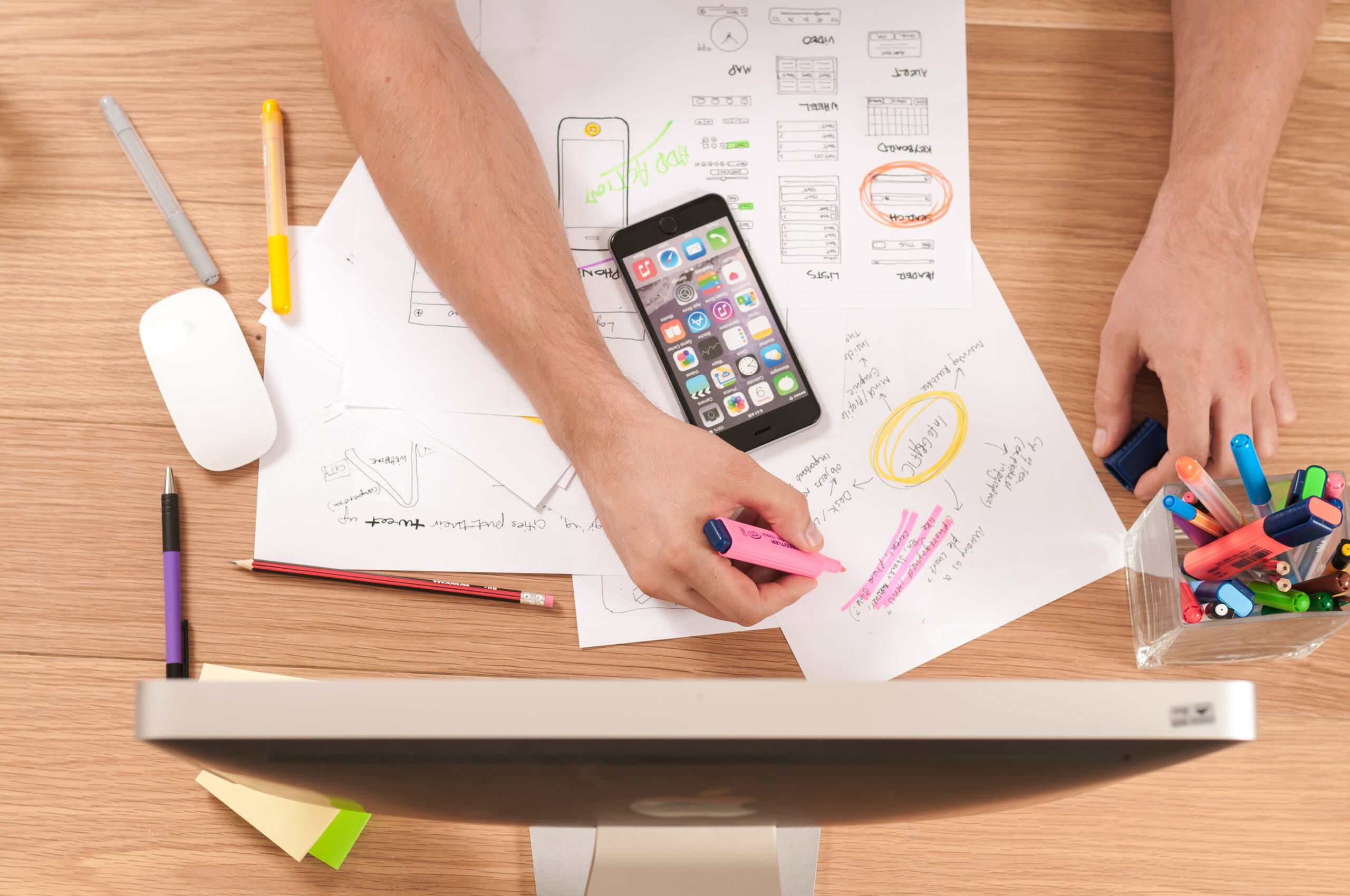Top 5 Tips of Logo Redesign for Non-Designers

Contents
A company’s logo holds immense significance as a representation of its brand identity in today’s visually driven world. Redesigning your logo may be challenging if you are not a designer. However, you don’t need to be a graphic designer with a view to redesigning your logo fresh and impactful makeover. You can give your brand’s visual symbol new life with the right approach and a creative mindset.
We’ll walk you through the top five expert tips to guide you through the logo redesign process, even if you’re not a designer. Read on to discover how to redesign a logo successfully if you’re ready to enhance your brand image.
Why Consider a Logo Redesign
Your logo is more than just a graphical element; it represents your brand image. The design landscape evolves, and you might need to redesign your logo as your business evolves. Here are three compelling reasons to consider a logo design for enhancing your brand image.
1. Modernization and Relevance

In today’s rapidly evolving design trends, modern design from a few years ago might appear outdated today. Unintentionally, an old-fashioned logo can create the impression that your brand needs to be in touch. Like “Logo Redesign Examples” below, you can include contemporary design elements, making your logo more relevant and visually appealing.
2. Adapting to Changes in Your Business
As your business grows, changes directions, or diversifies, your logo might need to represent the full scope of your products or services accurately. A logo redesign offers the opportunity to communicate these changes effectively. If your business is evolving, refining its mission, or looking to reach a new audience, a well-thought-out logo redesign can help.
3. Enhancing Brand Perception
Logos influences how customers perceive your brand based on emotions and perceptions. If your current logo doesn’t resonate with your target audience or convey the right message, it’s time for a redesign. With a logo redesign, you can better align your logo with your brand’s values, mission, and personality. You can establish a stronger and more memorable connection with your audience through this alignment.
Case Studies: Successful DIY Logo Redesign Examples
Real-life logo redesign examples can provide invaluable insights into the potential impact of taking matters into your own hands. Let’s explore how three diverse entities—a prominent Company, an ambitious Startup, and a dedicated Nonprofit—achieved impressive results through DIY logo redesigns:
Logo Redesign Examples #1 – Netflix: Revitalizing Brand Perception

The Challenge: Even industry giants recognize the importance of adapting to changing times. In 2000, Netflix began its journey as a DVD-by-mail rental service, sporting a utilitarian logo reflecting its initial offerings.
How to Redesign a Logo: As the world shifted towards streaming and digital entertainment, Netflix seized the opportunity to redefine its visual identity. In 2014, they unveiled a sleeker, bolder logo with a refined “N” symbol in red. This new design aligned perfectly with their shift from a DVD rental service to a global streaming platform.
Impact: Netflix’s logo redesign conveyed more than just a change in aesthetics. It embodied the company’s evolution and willingness to embrace innovative technologies. The minimalist yet impactful design now symbolizes seamless entertainment experiences for millions of subscribers worldwide.
Logo Redesign Examples #2 – Airbnb: Establishing a Stronger Identity
The Challenge: The characteristic of startup culture is adaptability, and Airbnb epitomizes this quality. The company began as an alternative lodging service, aiming to create a sense of belonging and community for travelers.
How to Redesign a Logo: Airbnb’s initial logo featured a simple, blue “A” enclosed in a circular symbol resembling location pins. However, as the company expanded its offerings and sought to foster a global sense of community, it introduced a more abstract and colorful logo in 2014. The new design captured the brand’s essence of the diverse experiences and connections.
Impact: While Airbnb’s new logo got mixed reactions, it symbolized inclusion, diversity, and memorable travel experiences. It’s a testament to how a startup’s identity can mature and align with its evolving narrative.
Logo Redesign Examples #3 – World Wildlife Fund (WWF): Adapting to Contemporary Trends

The Challenge: Nonprofits often communicate complex values and missions through a single visual element. The World Wildlife Fund (WWF) pursued this challenge to demonstrate their commitment to wildlife conservation.
How to Redesign a Logo: In 2000, WWF introduced an iconic logo that combined a stylized panda with the bold “WWF” abbreviation. This DIY logo redesign created a universally recognizable emblem for their conservation efforts.
Impact: WWF’s logo redesign symbolized its mission’s urgency and global reach. The panda, a charismatic endangered species, was a powerful representation of the broader cause. In addition to increasing their visibility, this powerful visual identity fostered a strong connection between them and their audience.
These case studies demonstrate that logo redesign is not limited to design professionals. Netflix, Airbnb, and WWF recognized their unique challenges and opportunities, shaping their logos to reflect their brand’s essence, evolution, values, and ambitions.
Top 5 Tips for Non-Designer’s Logo Redesign
As a non-designer, redesigning your logo might seem daunting, but with the right strategies, you can create an impactful and professional logo. Here are five comprehensive tips to navigate the logo redesign process successfully:
1. Use a Logo Maker App for Professional Redesign

Using a logo maker app is a game-changer for non-designers seeking polished results. This app provides templates, color schemes, fonts, and customization options for creating a logo that looks professional.
You should look for an app like Logo Maker Shop with various design choices and a user-friendly interface. This way, you can achieve a polished result that reflects your brand’s identity.
☞ Redesign your logo in 5 minutes – Logo Maker Shop
2. Simplify Your Design for Impact
The key to a successful logo redesign is to keep it simple. Aim for simplicity, as intricate details can be challenging to reproduce consistently across different platforms and sizes. Iconic logos like McDonald’s golden arches or Twitter’s bird symbolize the power of simplicity.
Having a clean, straightforward design makes your logo easy to recognize and memorable. Following these actions is a good idea:
- Focus on a single, distinctive element that captures your brand’s essence.
- Eliminate unnecessary details that might clutter your logo when scaled down.
- Prioritize clarity by ensuring your logo is easily interpreted at various sizes.
- Test the logo’s recognizability by asking friends or colleagues for their feedback.
3. Prioritize Clarity and Readability
The primary purpose of your logo is to convey your brand’s identity. Your logo must be clear and readable in different sizes. In addition to text legibility, consider the legibility of any symbols or icons you use.
The ability to quickly understand your brand’s logo helps create a lasting impression on your audience. The following steps will guide you through this process:
- Choose fonts that are easy to read, even at smaller sizes.
- Ensure that any icons or symbols you use are instantly recognizable and relevant to your brand.
- Test your logo’s readability by displaying it in different sizes and environments.
- You can get feedback from others on how fast they can spot your brand just by looking at the logo.
4. Choose Colors Wisely to Evoke Emotions

Colors play a significant role in conveying emotions and perceptions. Understanding color psychology will help you understand how colors affect how your audience perceives your brand. For instance, blue is often associated with trust and professionalism, while green represents nature and growth.
If you are redesigning your logo, choose a color palette that reflects your brand’s values and helps you convey your message. Here are the steps you need to follow:
- You should research the meanings and associations of different colors within your industry and culture.
- Choose a primary color that resonates with your brand’s personality and message.
- Consider using one or two complementary colors to enhance the overall visual appeal.
- Ensure that the selected colors maintain their impact on both digital and printed media.
5. Ensure Scalability and Adaptability
You will use your logo on various platforms, from business cards to websites to billboards. Ensure that your design is scalable and retains quality. Test your logo at different sizes to make sure it remains recognizable and clear.
Additionally, design a version of your logo that works well in color, grayscale, and black and white. This adaptability ensures your logo remains effective in any context. Here are some steps you need to follow to get your results:
- After each size change, you should resize your logo to various dimensions and check it for readability.
- Make sure you have logo versions that work on light and dark backgrounds.
- Printing your logo in black and white or grayscale will ensure it remains identifiable.
- Check how your logo appears on different screens and devices to ensure consistency.
With these tips, you can approach your logo redesign confidently and creatively. Ultimately, consider your logo redesign decisions carefully, as each decision shapes your brand’s visual identity.
The Takeaway
We have shown non-designers how to handle logo redesign with confidence in this blog post. With user-friendly apps, color psychology, simplicity, and adaptability, you’ve gained key strategies for successfully redesigning your logo. Logos are more than images – they’re the voice of your brand. These insights will help you redesign a logo that reflects your brand’s evolution and tells the story of your business.

As our Chief SEO & Branding Strategist, Robert Ellison is a digital marketing visionary with over 25 years of experience transforming brands through smart, data-driven SEO and impactful storytelling. Known for his expertise in aligning technical SEO with authentic brand narratives, he leads our team in creating strategies that boost search rankings while building strong, sustainable brand identities. A trusted advisor and frequent industry speaker, Robert combines deep technical knowledge with creative insight, helping our clients not only reach the top of search results but also genuinely connect with their audiences.




